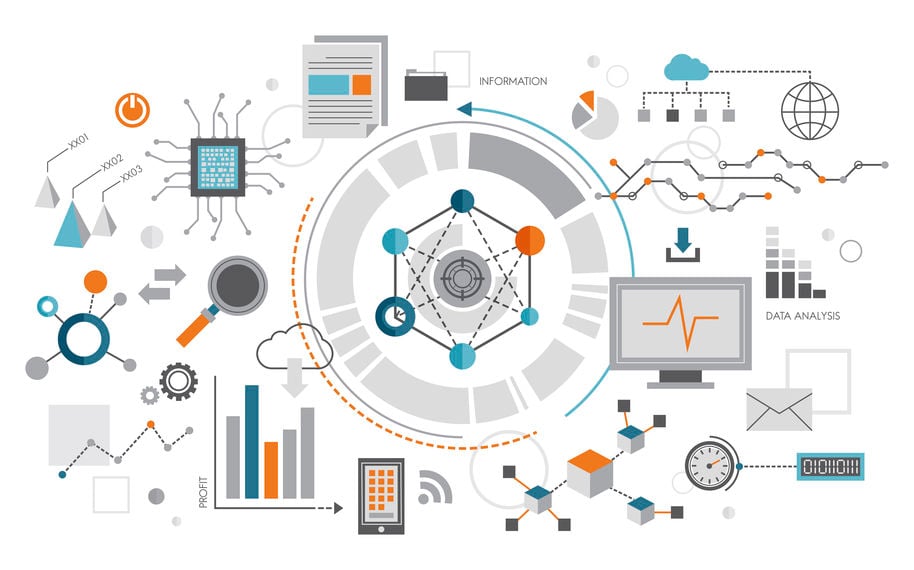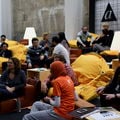Visualization in grant applications: why it is important and how to get better at it
In this article, I discuss very basic concepts around scientific visualization. More specifically, I talk about the visualization of grant applications since it is one of the most common cases we have worked with during 2017-2020 in the Materials Platform (now the Aalto Networking Platform).
Why is scientific visualization important and what is its role in delivering a message? In the Platform, we believe that peer review, mutual support and initiating a cross-disciplinary discussion on the topic of research popularisation in scientific communities eventually leads to improved scientific visualization on all fronts and in all directions. I believe that communication of scientific findings and concepts is essential for all disciplines and should be introduced as a skill at the very beginning of a study program.
Visuals: for whom we are designing them?
There are many ways to approach your visualizations while working on a grant application. I would suggest considering people and organizations involved in the reviewing process as potential investors who need to understand the value of a proposal. It is important to prove to them that your grant application is worth their time and resources, and its value is unbeatable. Along with that, I suggest asking yourself: what do your visuals communicate to the reviewer. Finally, I would consider stepping into the shoes of the funding agency and think about how visuals could positively impact the review and approval of the proposal. Such evaluation is important for each application as it prepares the applicant to meet the demands of various stakeholders of the funding ecosystem and see the bigger picture that can support the proposal.
This article is mostly concerned with how visuals affect information delivery and its absorption. Therefore, we only briefly mention the self-discovery process while working with visuals, even though I believe this topic is important and worth mentioning.
So, what are visuals good for?
-
Understand the main point or providing a bigger picture quickly. Visuals help your text and the concepts behind it become more approachable for the reviewer. Visuals, like a graphical abstract, comparison graphs or tables, provide fast access to the information for a reader.
-
Attention getter. Visuals work as the eyes' anchors in the text. The eyes gravitate towards elements (visual) that differ from the rest in the area (text) and naturally scan the image area and the text nearby.
-
Show your competence. Finally, visuals show that you know how to communicate your research, and it can be a valuable point for some highly-competitive grant proposals.
Also, I would argue that visuals are functional and logical dividers for your text. However, it is smart not to use it only as a space-filler but consider the points above first and think about what visuals work best for your application and where you would like to place them.
From a self-development perspective, visuals help you to clarify your thoughts, state the concept priorities, and find the best way to explain and support your research ideas. It all takes time and effort, so the earlier you consider the importance of visualization in your research and start developing the skill, the better.
Basic visual tools for scientific communication
There are a few types of visual elements researchers usually use in their grant applications and research proposals. Those are photos, schemes, charts, graphs, tables, conceptual images and graphical abstracts. All have different positions, purposes and utility in the application. While considering any of these visual types for your application, please think, what is the value visual brings to your proposal? Evaluate if the chosen visual type is being the best for your case.

While working with visuals, it is important to consider the following visual tools:
-
Composition
-
Colour
-
Hierarchy of visual elements
-
Spatial contrast and balance of elements
Learning and knowing how to use even one of those tools will help to improve the visual quality of any scientific image. In the context of this article, I would like to mention those, and hopefully, it will inspire some of you to learn more about the graphical tools that are available. For more information, please see the book recommendation list attached at the end of this article.
How to understand if your visualization is good enough?
Quick answer: get and give feedback!
Once you have your text and visuals drafted, it is time to discuss it with someone who can help you proceed. There are a few suggestions, but in the end, it’s up to you with whom you find it comfortable to discuss your proposal. Consider:
-
Employ those who are interested in your success. Ask your supervisor or a Grant Writer to your meetings or email to exchange their opinions about the visuals and their role in your proposal. Seek support elsewhere in your university and find out if there are services available that can help you.
-
Talk with people in the same boat. Ask the opinion of your peers and researchers who are somewhat familiar with your area, but not fellow experts. Also, consider reviewing others' work as a good practice that might help to train your 'visual muscle'. Grant agencies in every country are always looking for reviewers.
-
Benchmark and collect the best practices. Review other people’s visuals from top journals and look for good examples from the internet and while watching presentations. If you find something you like, make a quick note, sketch it, and save it for later.
-
Step out of the (scientific) box. Finally, discuss your visualization with someone who does not work in your scientific field and ask what they understand from your graph. Such a discussion might help you to find ways to improve your visuals and make it more accessible to a wider audience.
The point of the grant visualization is to explain and deliver the message as efficiently as possible. You do not need an art masterpiece with perfect shades and line thicknesses. But you might need a communicative masterpiece, neatly arranged, pleasant for the eye and available for your reader.
- Visual Strategies: A Practical Guide to Graphics for Scientists and Engineers
by Felice C. Frankel and Angela H. Depace - The Truthful Art: Data, Charts, and Maps for Communication (Voices That Matter)
by Alberto Cairo - The data visualization handbook
by Juuso Koponen and Jonatan Hildén (available in English and Finnish versions)
- Infogram: for creating infographics and reports.
- RAW Graphs: its aims at providing a missing link between spreadsheet applications and vector graphics editors.
- BioRender: there you will find icons and templates for your project visualization.
- SciDraw: is a free repository of high-quality drawings of animals, scientific setups, and anything that might be useful for scientific presentations and posters.
A good friend and colleague recommended a few programs and links to explore. If you have more useful resources you'd like to share with us, please email [email protected] and we might update the list.
See also
Aalto Networking Platform
The Aalto Networking Platform brings together research expertise across departments, supporting collaboration both inside and outside of Aalto.

- Published:
- Updated: